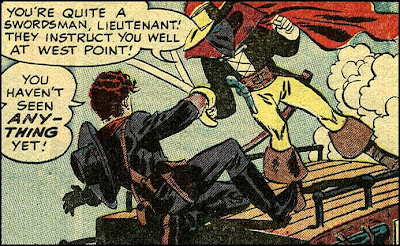To start, perhaps I had better have a little discussion of the Golden Age Superman. The origin is well-known--Krypton exploding, Jor-El and Lara sending their baby off to Earth, where he is raised by the Kents. The early Superman stories, reflecting somewhat the pulp fiction novels of the time, were pretty gritty. Remember, at this time the concept of comic books as entertainment for adolescent boys had not yet taken hold. But over time, the sheer power of Superman necessitated a change.
The change was handled differently in the comics versus the radio show. In the comics, the character and his adventures took on a more whimsical tone. Oh, Superman had some serious villains that he foiled, but he had a lot of more buffoonish enemies as well: Wolfingham,, the Toyman, the Prankster and Mr Mxyztplk for example. In the radio show, which was hugely influential, the series over time developed into "Clark Kent, Detective", with Superman often reduced to mop-up work.
This came about simply because the character was far too swift and strong. Nobody could compete against him physically and so they were forced to rely on guile and cunning. Even Luthor was usually portrayed as operating behind the scenes; in many Golden Age and early Silver Age stories he is not shown until the last page.
The TV show, which was in its final year in 1958, was somewhat similar to the radio show, with Clark doing all the brainwork, and Supes showing up at the end to show off his abilities and corral the villains.
This was the Superman that Weissinger inherited. What he did with the character starting in 1958 was historic:
1. Introduced new major and minor characters. Supergirl, the Legion of Superheroes, Lucy Lane, Pete Ross, etc., all made their first appearances early in the Silver Age.
2. Introduced new locales: Kandor, Krypton (not technically a new locale, but it was rarely used as the setting for a story before the Silver Age), the future, outer space, the Fortress of Solitude, the Phantom Zone, etc.
3. Added new villains to the roster (Brainiac), while developing the characters of older ones (Luthor) as well as resuscitating defunct ones (the renamed Mxyzptlk).
4. Developed Lois Lane into a character who could sustain her own comic.
5. Added continuity between stories, so that characters and relationships would evolve over time.
6. Added letters columns to create a sense of community between Superman fans.
7. Developed new weaknesses for Superman, creating more of a balance between the Man of Steel and his enemies.
I hope you enjoy this month-long project!












































